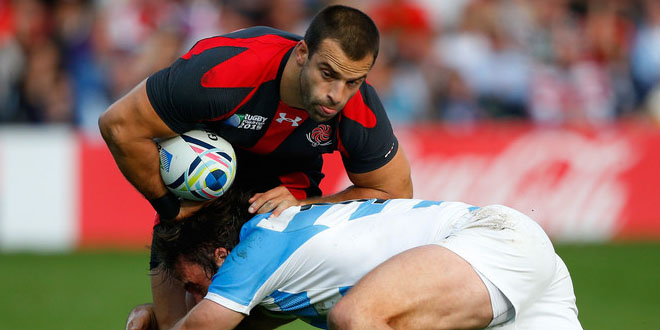Who could be the Rugby World Cup hosts in 2035 and beyond? This is a common question about the future of the centerpiece of the game. It often comes up alongside the question of expansion. It is highly likely that the Men’s Rugby World Cup will expand from 20 to 24 teams.
WORLD RUGBY HOSTING CRITERIA
The World Rugby administration requires financially sound bids. The majority of voters on the World Rugby Council agree which was a leading reason as to why France secured RWC 2023 hosting rights.
In addition to market size, facilities are vital. World Rugby’s requirement is a venue seating 60,000 spectators for the RWC Final. Additional stadium sizes are flexible with France 2023 having a total of nine venues, a lower number than all tournaments in the professional era.
Japan 2019 featured twelve venues, while the 2002 FIFA World Cup had ten Japanese venues and a further ten in South Korea. Five of the Japanese venues were repeated, with World Rugby opting for more variety in venue sizes which saw smaller stadiums in Tokyo and Osaka than in the 2002 FIFA World Cup.
BRAND NEW NOT SEMI NEW
To look at future Rugby World Cup hosts in simple terms there are two categories. They are previous hosts who may host again and new candidates who may host for the first time. This article considers the latter category.
Prior hosts whether in whole or part who may have expressed interest in hosting again or may do so include England and / or UK, Ireland, Japan and South Africa. Both England and Japan are on record as wanting the tournament in the 2030’s. Ireland hosted matches during Rugby World Cups 1991 and 1999 while Scotland did so during Rugby World Cups 1991, 1999 and 2007 and Wales in the same three in addition to in 2015. Ireland and South Africa both bid to host Rugby World Cup 2023. Both demonstrated compelling bids but missed out.
Five new hosts have been identified for this article. One not included is Fiji. The addition of Fiji to Super Rugby Pacific has been well received. It is likely that Fiji will continue to blossom in the coming years and emerge as an option to host a tour match against the British & Irish Lions as well as teams from the Six Nations.
A possibility that could well be explored is for Fiji to host a Pool in a World Cup similar to that of Ireland in the 1990’s or similar to how Wales hosted pool matches in 2007 and 2015. This would likely be as part of a future Rugby World Cup in New Zealand.

ARGENTINA
Final: Buenos Aires
Argentina is unique in Rugby World Cups. It is the only Semi Finalist without experience in hosting Rugby World Cup matches. Previous bids have been attempted but cancelled. The bid to host Rugby World Cup 2023 officially ended due to Argentina concluding that World Rugby would not turn down France’s bid.
Argentina has hosted big events before. They include the 1978 FIFA World Cup and nine editions of the Copa America, the most recent being in 2011. Six venues hosted matches in the 2011 Copa America. All have hosted Los Pumas‘ test matches with strong attendances.
Rather than having a regular home, Los Pumas have played across Argentina for the past two decades. Since 2004 Buenos Aires has gone from hosting virtually all home tests to one per year. The UAR has successfully worked with regional governments who bid to host Los Pumas’ home matches.
Buenos Aires would be the center-piece of a Rugby World Cup, including hosting a Final. A second venue in Greater Buenos Aires is probable as is the provincial capital of La Plata. Options exist further south and well down into Patagonia. However, the selected thirteen venues are more modern and prepared.
The following sample of venues begin in the national capital. Córdoba is in the center of the country. Mendoza and San Juan in the west. Rosario, Santa Fé and Resistencia in the northeast and Santiago del Estero, Tucumán, Salta and Jujuy in the northwest.
| # | CITY | VENUE | CAPACITY |
| 1 | Buenos Aires | River Plate – El Monumental | 83,214 |
| 2 | Avellaneda | Estadio Libertadores de América | 48,069 |
| 3 | La Plata | Estadio Único | 41,000 |
| 4 | Córdoba | Estadio Mario Kempes | 57,000 |
| 5 | Mendoza | Estadio Malvinas Argentinas | 42,000 |
| 6 | San Juan | Estadio del Bicentenario | 25,286 |
| 7 | Rosario | Estadio Gigante de Arroyito | 41,465 |
| 8 | Santa Fé | Brigadier General Lopez | 40,000 |
| 9 | Resistencia | Estadio Centenario | 25,000 |
| 10 | Santiago del Estero | Único Madres de las Ciudades | 30,000 |
| 11 | Tucumán | San Isidro de Lules | 50,000 |
| 12 | Salta | Padre Ernesto Martearena | 20,408 |
| 13 | Jujuy | Estádio 23 de Marzo | 25,000 |

CANADA
Final: Vancouver
Canada is well connected to most of the world. It is accessed via direct flights from Asia, Europe, Oceania, and South America. The country is huge; yet, all major cities are located near the southern border with the USA.
Canada is a prior World Cup Quarter Finalist and has done even better at the Women’s Rugby World Cup. Canada also has hosting experience; the 2006 Women’s World Cup took place in Edmonton, Alberta. The Commonwealth Stadium has also hosted the Canadian Men’s test team and could host Men’s Rugby World Cup matches.
Two Canadian cities will host FIFA World Cup 2026 matches. Toronto’s BMO Field will increase its capacity by 17,756. Vancouver’s BC Place is to be upgraded to 59,841. With 159 fewer seats than World Rugby’s required 60,000 to host the final, it would appear to be an appropriate option.
Canada could host the tournament in nine venues like France 2023, twelve like Japan 2019 or somewhere in between. Toronto and Vancouver are ready as the major centers. Edmonton, Calgary and Montreal can all be in the discussion for hosting prominent matches.
The sample of twelve venues below is listed in order from east to west. There are additional possibilities in selected cities. Toronto’s Rogers Center and Montreal’s Stade Saputo are examples.
| # | CITY | VENUE | CAPACITY |
| 1 | Halifax | CFL Stadium * Proposed | 24,000 |
| 2 | Montreal | Olympic Stadium | 56,040 |
| 3 | Ottawa | TD Place | 24,000 |
| 4 | Toronto | BMO Field | 45,736 |
| 5 | Hamilton | Tim Hortons Field | 23,218 |
| 6 | Winnipeg | IG Field | 33,500 |
| 7 | Regina | Mosaic Stadium | 33,350 |
| 8 | Edmonton | Commonwealth Stadium | 56,400 |
| 9 | Calgary | McMahon Stadium | 46,020 |
| 10 | Vancouver | BC Place | 59,841 |

ITALY
Final: Rome
Italy has previously bid to host Rugby World Cups. World Rugby opted for a return to England (and Wales) in 2015 rather voting in favor of a new location. The Italian test team has since registered home wins over Australia and South Africa.
In addition to on-field competitiveness, Italy has many factors in its favor. The country is highly accessible for visitors across Europe. It is also well-connected to Asia, North America and South America. The nominal GDP is the 10th largest in the world.
Listed below, the selected stadiums were included in Italy’s bid to host Rugby World Cup 2023. Like Argentina, Italy withdrew their bid after concluding that bidding against France was too high of a financial risk.
The venues are arranged in a geographical formation with Rome at the center and Milan as the probable second major venue. Milan is joined by Florence, Bologna, Padua and Udine north of Rome and with Genoa and Turin to the west of Milan itself. Naples, Bari, and Palermo are south of Rome.
| # | CITY | VENUE | CAPACITY |
| 1 | Rome | Stade Olimpico | 72,698 |
| 2 | Milan | San Siro | 81,277 |
| 3 | Florence | Stade Artemio Franchi | 47,290 |
| 4 | Bologna | Stadio Renato Dall’Ara | 38,279 |
| 5 | Padua | Stadio Eugene | 32,420 |
| 6 | Udine | Stadio Fruili | 25,144 |
| 7 | Turin | Stade Olimpico | 27,958 |
| 8 | Genoa | Stade Luigi Ferraris | 36,599 |
| 9 | Naples | Stadio San Paolo | 60,240 |
| 10 | Bari | Stadio San Nicola | 58,248 |
| 11 | Palermo | Stadio Renzo Barbera | 37,619 |
 +
+
GEORGIA + ROMANIA
Final: Tbilisi
Georgia’s test team has gone from strength-to-strength since debuting a the Rugby World Cup in 2003. The country is established as a constant at the World Cup. Players ought to have facing the Lelos in Georgia on their bucket list.
Georgia’s four largest cities are Tbilisi, Batumi, Kutaisi and Rustavi. Rustavi is located very close to the capital. Gori is the country’s fifth largest city. It is located between Tbilisi and Kutaisi.
53,400 attended Georgia vs Romania in Tbilisi in 2016. The Black Sea port city of Batumi hosted Georgia’s win over Italy in 2022. Kutaisi hosted Georgia vs Argentina XV a week earlier. The venue would require upgrading. Rustavi and Gori are also included as Georgian venues. Both would require significant upgrades.
If Georgia were to bid to host a Rugby World Cup it would need an additional four venues. Alternatively, it could enter a bid alongside Romania. A variety of factors indicate that a Black Sea Rugby World Cup would be successful. For instance, regular international competition, Rugby Europe relations, the 1 hour time zone flexibility and both Bucharest and Tbilisi are linked to many European airport hubs.
By co-hosting the costs would be shared as would the hosting responsibilities. There would be a 50,000+ stadium in both capitals. Tbilisi’s could be upgraded above the 60,000 mark. Romanian cities Timisoara, Craiova and Cluj-Napoca all have modern stadiums seating over 30,000. The smaller Ilie Oana Stadium in Ploiesti does not require an upgrade despite its capacity.
| # | CITY | VENUE | CAPACITY |
| 1 | Tbilisi, GE | Boris Paichadze Dinamo Arena | 54,549 |
| 2 | Tbilisi, GE | Mikheil Meskhi Stadium | 27,223 |
| 3 | Batumi, GE | Abjarabet Arena | 20,383 |
| 4 | Kutaisi, GE | Ramaz Shengelia Stadium | 15,000 |
| 5 | Rustavi, GE | Poladi Stadium | 6,000 |
| 6 | Gori, GE | Tengiz Burjanadze Stadium | 5,000 |
| 7 | Bucharest, RO | Arena Națională | 55,634 |
| 8 | Bucharest, RO | Stadionul Steaua | 31,254 |
| 9 | Timisoara, RO | Stadionul Dan Paltinisanu | 32,972 |
| 10 | Craiova, RO | Stadionul Ion Oblemenco | 30,983 |
| 11 | Cluj-Napoca, RO | Cluj Arena | 30,201 |
| 12 | Ploiesti, RO | Ilie Oana Stadium | 15,073 |

SPAIN
Final: Barcelona
Spain played at Rugby World Cup 1999 and qualified for Rugby World Cup 2023 only to subsequently be disqualified from the latter. Spain has been busy playing matches against Rugby World Cup regulars.
A factor unique to Spain as a potential new Rugby World Cup host is the success of professional neutral matches in the country. Barcelona hosted the Top 14 Final in front of a world record attendance. San Sebastián has hosted Top 14 and Champions Cup matches while Bilbao hosted a Champions Cup Final. Games have demonstrably worked well in cities in different part of the country. In short, Spain is a proven market for visiting supporters.
Many factors favor Spain hosting a Rugby World Cup. Spain is highly accessible to the French market and also to the Six Nations market as a whole. The country ranks as the 14th largest economy in the world. Madrid and Barcelona are major airports that are very well connected to intercontinental destinations. The Spanish language is thriving in Rugby World Cups with Argentina, Uruguay and Chile involved at France 2023.
A model of twelve venues in shown below. Barcelona’s Camp Nou is the listed for the final. The 99,124 attendance for Racing 92 vs Toulon is larger than the Rugby World Cup record. The Estadio Metropolitano is the Madrid venue. It played host to the RWC 2023 warm-up between Spain and Argentina.
| # | CITY | VENUE | CAPACITY |
| 1 | Barcelona | Camp Nou | 99,354 |
| 2 | Madrid | Estadio Metropolitano | 68,456 |
| 3 | Bilbao | San Memes | 53,331 |
| 4 | San Sebastián | Estadio Municipal de Anoeta | 39,313 |
| 5 | Valladolid | Estadio José Zorrilla | 27,618 |
| 6 | Vigo | Estadio de Balaídos | 29,000 |
| 7 | Zaragoza | La Romareda | 33,608 |
| 8 | Valencia | Estadio de Mestalla | 48,600 |
| 9 | Murcia | Estadio Enrique Roca de Murcia | 31,179 |
| 10 | Alicante | Estadio José Rico Pérez | 29,500 |
| 11 | Seville | Estadio Ramón Sánchez Pizjuán | 43,883 |
| 12 | Málaga | La Rosaleda | 30,044 |
 Americas Rugby News Rugby news from across the Americas!
Americas Rugby News Rugby news from across the Americas!




